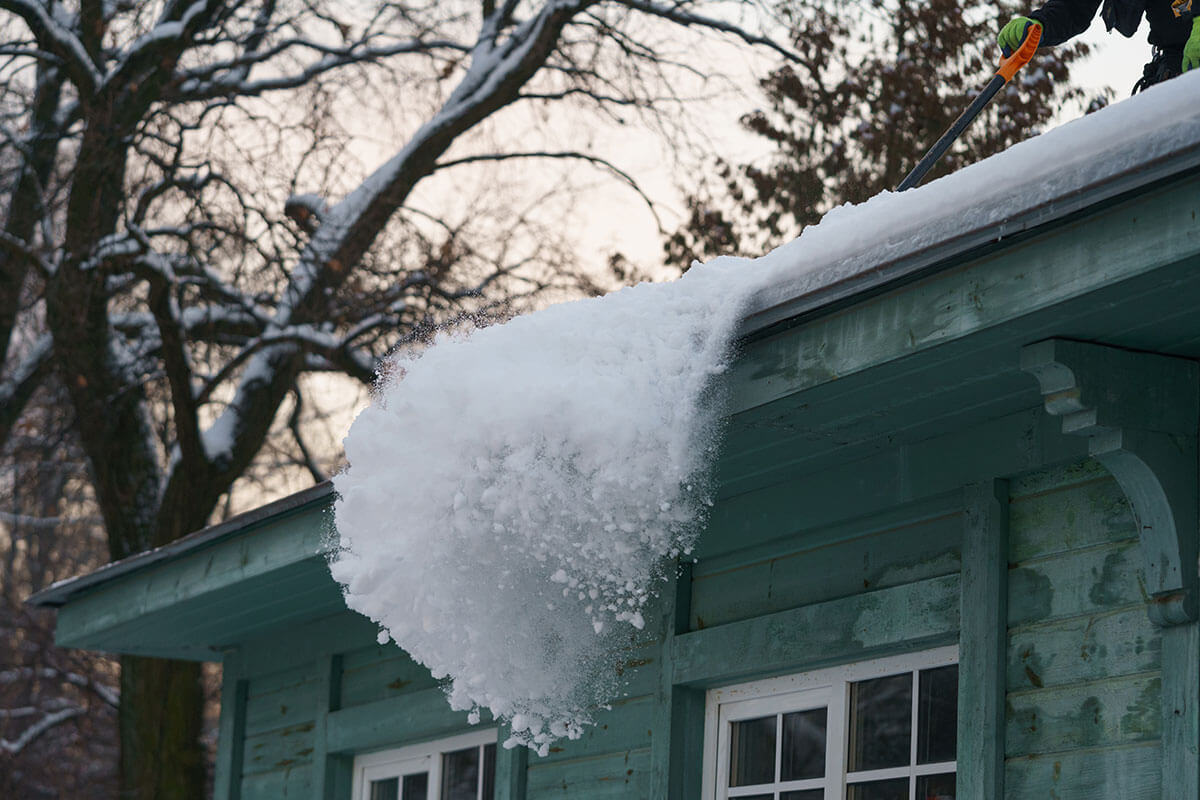As winter descends, the beauty of snow-covered roofs can bring a sense of enchantment to your home’s exterior. However, beneath that picturesque snowfall, a hidden danger may be lurking – ice dams. Ice dams are a common winter woe that can cause serious damage to your home. In this blog post, we will explore how to detect and prevent ice dams, safeguarding your home’s exterior from the cold grasp of winter.
Understanding Ice Dams
Ice dams are thick ridges of ice that form along the eaves of your roof. They occur when heat from your home’s interior escapes into the attic and warms the roof, causing snow on the upper portion to melt. As this water runs down the roof and reaches the eaves (where it’s colder), it refreezes, forming ice dams. Over time, these ice dams trap additional melting snow, creating a reservoir of water that can infiltrate your home.
Detecting Ice Dams
Recognizing the signs of ice dams early is essential to prevent costly damage. Here are some key indicators:
- Icicles: While icicles may look beautiful, they are often a sign of ice dams. Long, sharp icicles hanging from your gutters or roof edge can indicate that melting snow is refreezing in those areas.
- Water Stains on Ceilings: Water stains or damp spots on your ceilings or walls are a telltale sign that water is seeping into your home. This is usually due to the melting snow and ice backing up under your roof.
- Sagging Gutters: The weight of ice dams can cause gutters to sag or detach from your home, increasing the risk of damage.
Preventing Ice Dams
Preventing ice dams is far more effective and less costly than dealing with the damage they can cause. Here are some steps to help you protect your home’s exterior:
- Insulate Your Attic: Proper attic insulation is the key to preventing heat from escaping into the attic and warming the roof. Insulation keeps your roof cold and discourages the formation of ice dams.
- Ventilate Your Attic: Adequate attic ventilation helps maintain a consistent temperature in your attic, preventing hot spots that can lead to snow melting unevenly on the roof.
- Seal Air Leaks: Inspect your attic for any gaps, cracks, or holes that could allow warm air to escape into the attic. Seal these openings to keep your attic cooler.
- Clear Snow from Your Roof: Safely removing snow from your roof can reduce the potential for ice dams. Use a roof rake to carefully clear snow, but be cautious not to damage your roofing materials.
- Install Heated Cables: Heating cables can be installed along your roof’s edge and gutters to melt ice and create a path for water to escape. However, this is a reactive measure and should not be your primary strategy.
Preventing ice dams is crucial to safeguarding your home’s exterior during the winter months. By understanding the causes of ice dams and taking proactive steps to insulate, ventilate, and protect your roof, you can enjoy a beautiful winter landscape without the worry of ice dam-related damage. Protecting your home from these icy intruders will keep your home’s exterior looking pristine and help you avoid costly repairs in the long run.
Don’t fall victim to inexperienced contractors who show up with hammers, ready to chisel away at the ice dams. This rookie approach may seem like a quick fix, but it often results in dings and holes in your roof and gutters. The truth is, it leads to even more expensive damage down the line.
Instead, trust our professionals who use proven methods to protect your home from ice dams without causing additional harm.
Learn more about how we can help!

